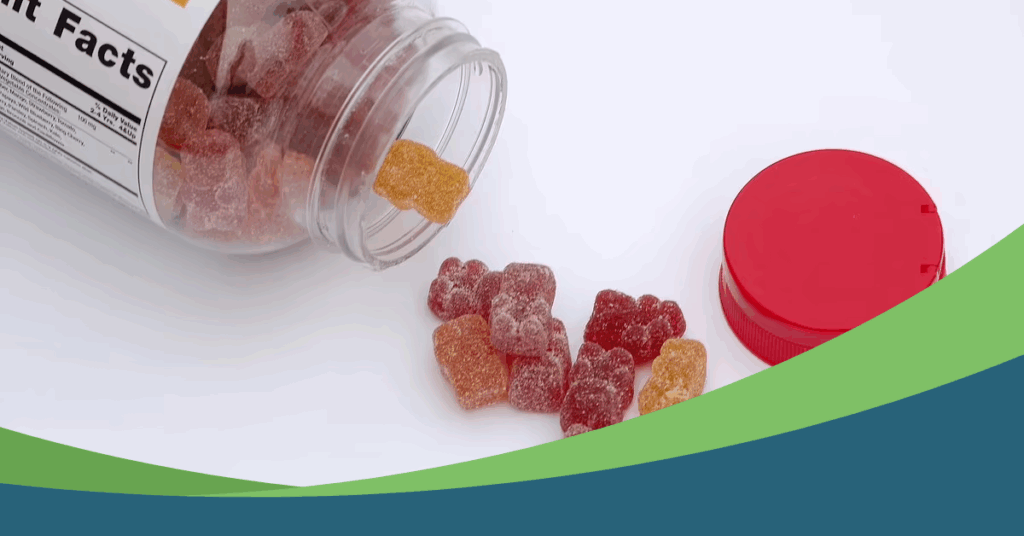In the highly competitive supplement industry, the appearance of your label packaging can make or break a sale, sometimes within just 20 seconds. When a consumer is browsing a shelf, an eye-catching supplement label design can set your product apart. That’s where an attractive supplement label becomes essential, not just for aesthetics but also for building credibility and connecting with your intended audience.
If you’re crafting a new supplement label or refreshing an existing one, we’ll walk you through the complete design process, from planning to the final touches. Following these five label designing steps will give you a much stronger chance of landing in a consumer’s cart.
Steps To Choose A Unique Supplement Label Design
Before diving into the visual design, two decisions lay the groundwork. Understanding your target audience’s demographics and buying motivations helps set the tone for both the visuals and messaging.
Secondly, your design options may vary depending on whether you use pressure-sensitive labels, shrink sleeves, or flexible pouches. Each format has its own surface area and limitations, such as curved surfaces or tear lines, that affect layout decisions. Know your packaging before opening your design tool.
Now that you have set the initial grounds, it’s time to choose the appropriate design for your supplement brand. Here is a step-by-step guide on how to select a perfect supplement label.
Step 1: Make a Checklist of Packaging Elements
Start with a clear outline of what needs to be designed and where each element should be placed. The structure of your packaging will influence both space allocation and content flow. Consider the following for each type:
- Pressure-sensitive labels: Identify front-facing areas for branding and nutritional info.
- Shrink sleeves: Account for zones that might warp during heat application, avoiding critical text placement.
- Flexible packaging: Ensure essential branding and information remain visible after the package is opened.
This checklist approach will help you avoid missed opportunities and keep the supplement design process structured and intentional.
Step 2: Decide What Content Goes on the Label
When you’re designing a product label, especially for a supplement, clarity and compliance are both high priorities. The label should tell the consumer what the product is, what it does, and why they should trust it.
Here’s what to consider including:
- Mandatory Information (as per FDA guidelines):
- Product identity (what the supplement is)
- Net quantity
- Supplement Facts
- Ingredient list
- Company name and address
- Selling Points:
- Claims like “Supports Immune Health” or “Plant-Based Formula” should be short and precise.
- Any certifications or badges like “Non-GMO,” “Gluten-Free,” or “Made in USA” may also be featured using recognizable icons.
- Helpful Additions:
- Dosage instructions
- Warnings or contraindications
Storage suggestions
This phase of the label design steps is less about creativity and more about compliance and clarity. Get everything down before moving on to visuals.
Step 3: Match the Design to the Audience
Your target audience’s preferences should drive the overall visual tone. For example:
- Health-conscious shoppers might appreciate soft greens, earthy tones, and minimalistic layouts.
- Athletes may be drawn to bold fonts, high-contrast color schemes, and strong geometric shapes.
- Parents might look for bright but friendly visuals, with clear and simple language.
Once you’ve selected a direction, start defining your design components:
- Colors: Choose a palette that supports your brand and appeals to your audience. Always check that your chosen colors are compatible with your printing method.
- Typography: Use fonts that are easy to read and reflect the product’s personality, such as modern, clinical, fun, luxurious, etc.
- Graphics and Icons: Consider lifestyle imagery, ingredient visuals, or clean icons that communicate product benefits. Examples can include “Vegan,” “Sugar-Free,” or “Third-Party Tested.”
- Visual Accents: If your printing method supports it, consider touches like spot UV, foil, or textured finishes to draw the eye and reinforce product quality.
These visual details are what bring the concept of Good Supplement Label Design to life. Keep everything consistent with your brand’s tone and purpose.
Step 4: Create the Label Design
Now comes the hands-on part of creating a supplement label. With your copy and visual direction ready, begin building your layout:
- Establish a Clear Hierarchy: What’s the first thing someone should notice? Usually, this is the product name or benefit statement. From there, arrange supporting elements in a logical order.
- Use White Space Wisely: Avoid overcrowding the label. Strategic spacing makes your design more approachable and easier to scan quickly.
- Check Contrast and Legibility: Text should be readable in various lighting conditions. Make sure your color combinations don’t cause strain.
- Follow Regulations: Fonts used for required content must meet minimum sizes and formatting standards as outlined by FDA packaging rules.
- Be Print-Ready: Prepare your final design according to your printer’s file specifications. This typically means using CMYK colors, including bleed margins, and flattening layers.
If you’re unsure whether your design is ready for production, it’s wise to consult your printing partner early. They will flag any issues before they become costly mistakes.
Step 5: Review and Refine
Once the design is finished, don’t rush to print. Review your work critically:
- Does the label reflect the brand’s message?
- Is all the mandatory content present and correct?
- Will the design make sense when applied to your specific packaging shape?
- Is the main selling point immediately clear?
It also helps to do a quick shelf test. Print out a mock-up and place it among other supplement bottles or pouches. Does it stand out? Is it easy to identify from a few feet away? Would someone pick it up out of curiosity?
Getting feedback from a few people who match your target audience can offer fresh insights you may have missed.
Final Thoughts
Crafting a unique supplement label design takes more than an eye for color or typography. It’s a strategic process that blends regulatory compliance with creative direction. By carefully working through these label designing steps, you’ll end up with packaging that does more than just look good. It will support your product’s credibility, communicate essential information quickly, and appeal directly to the people you want to reach.
Looking for standout label design and packaging that truly represents your brand? At NutraBest, we specialize in custom supplement label design and FDA-compliant packaging tailored to your unique needs. Whether you want a single label, a full logo and label package, or complete brand creation services, including packaging, marketing materials, and compliance reviews, we’ve got you covered.
Get a quote today and discover how our expert team can bring your supplement brand to life with high-quality, eye-catching designs and reliable regulatory compliance.



